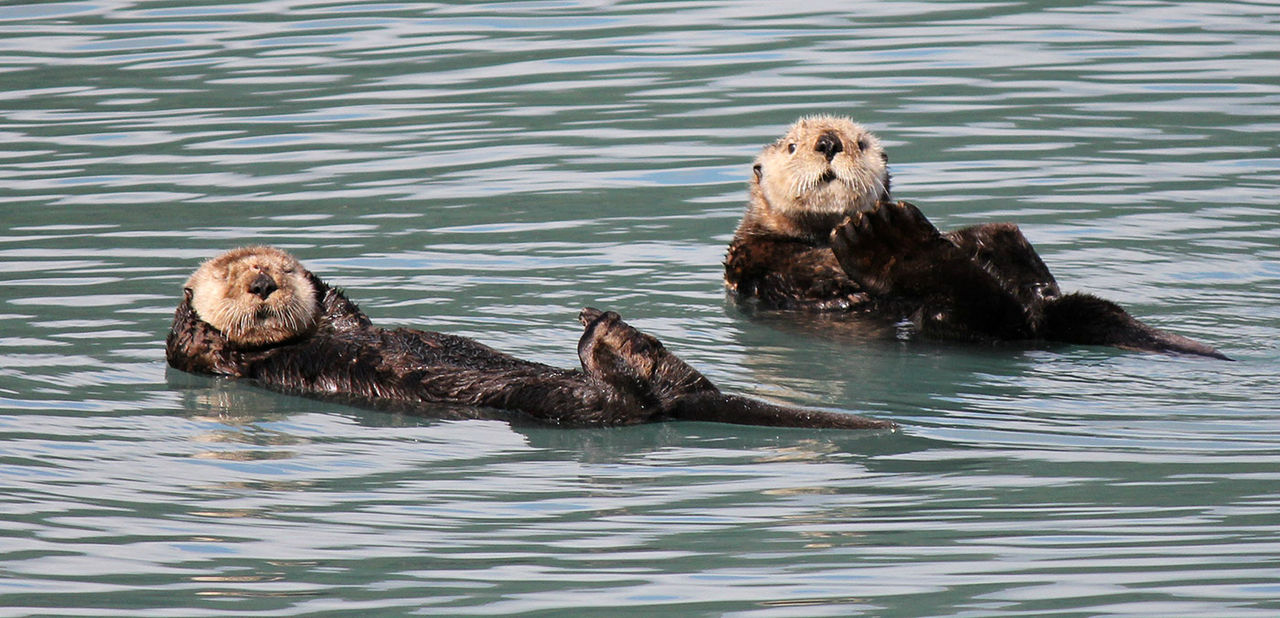Pinnipeds are a group of marine mammals, mostly seals but also sea lions and walruses, which spend their lives in the ocean and on land. These animals normally spend time on land, but are fin-footed allowing them to swim efficiently in water.
Seals
 Harbour Seal
Harbour Seal
• Up to two metres in the length.
• Up to 150 kilograms in weight.
• Found in northern temperate coastal waters.
• Black colouration with light spots to nearly white with dark spots.
• Spindle shaped body with robust head and broad snout, and no external ear flaps.
• Short, fur-covered front flippers.
Northern Elephant Seal
• Up to three metres (female) to 4.5 metres (male) in length.
• Up to 1,000 kilograms (female) and 2,000 kilogram (male) in weight.
• Found in the Eastern and central North Pacific Ocean.
• Males are uniformly grey in colour, while females and juveniles are darker brown on top and lighter underneath.
• Robust body shape that tapers at hip.
• Adult males have a large, elongated fleshy nose.
• No external ear flaps.
• Short, fur-covered front flippers.
Northern Fur Seal
• Up to 1.5 metres (female) and 2 metres (male) in length.
• Up to 50 kilograms (female) and 270 kilograms (male) in weight.
• Dark grey to black in colour for males to silver/grey undercoat with a brownish throat on adult females.
• No external ear flaps.
Grey Seal
• Up to two metres (female) to 2.3 metres (male).
• Up to 200 kilograms (female) to 250 kilograms (male).
• Found coastally in the North Atlantic Ocean.
• Dark bodies with irregular spots of light and dark.
• Males have massive shoulders and thick folded skin on neck.
• No external ear flaps.
• Long snout and wide muzzle.
Harp Seal
• 1.6-1.7 metres in length.
• 80-130 kilograms in weight.
• Found in the North Atlantic and Arctic Oceans.
• Adults have distinctive harp pattern on silvery white background and black head.
• Large eyes and pointy nose.
Sea Lions
Steller Sea Lion
• Up to 2.5 metres (female) and 3.3 metres (male) in length.
• From 275 kilograms (female) and 1,000 kilograms (male) in weight.
• Found coastally in the North and Eastern Pacific Ocean.
• Brown to yellow when dry, brown to black when wet in colour.
• Short but broad snout, and small external ear flaps.
• Front flippers are broad, with hair covering ¾ of the top surface.
California Sea Lion
• Up to 2.5 metres in length.
• Up to 400 kilograms in weight.
• Found coastally in the Eastern North Pacific Ocean.
• Dark brown to light tan in colour, look almost black when wet.
• Straight, narrow snout.
• Small external ear flaps.
• Broad front flippers.
Sea Otter
• Up to 1.5 metres in length.
• Up to 50 kilograms in weight.
• Coastal North Pacific Ocean.
• From grey, brown and black in colour, with a lighter coloured head.
• Streamlined body with larger head.
• Larged, webbed hind flippers with long 5th digit.
• Long, slightly flattened tail.
Atlantic Walrus
• Up to 2.6 metres (female) to 3.1 metres (male) in length.
• From 560 kilograms (female) to 900 kilograms (male) in weight.
• Found in the western Arctic Oceans.
• Long canine teeth or tusks, which are longer and bigger for males than females.
• Dark brown in colour.






